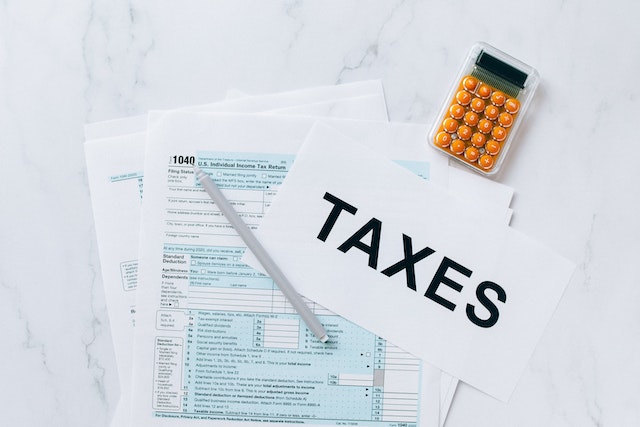
- Best Tips to Choose a Profitable Rental Property
- Assessing the Neighborhood
- Understanding Property Taxes
- Analyzing Crime Rates
- Investigating the Job Market
- Considering Local Amenities
- Researching Future Development
- Monitoring Number of Listings and Vacancies
- Evaluating Average Rents
- Considering Natural Disasters
- Conclusion
Are you looking to expand your real estate portfolio and maximize your rental income? Choosing the right rental properties can be a game-changer for landlords seeking profitable investments. In this article, we'll guide you through the essential steps to identify lucrative rental opportunities.
From understanding market trends to evaluating property potential, we'll provide you with practical tips and expert insights. Whether you're a skilled landlord or just starting out, our comprehensive guide will help you make smart investment decisions and secure properties that promise steady, long-term returns.
Let's dive in and unlock the secrets to successful rental property investments!
Best Tips to Choose a Profitable Rental Property
Here is a list of essential strategies to help you identify and invest in rental properties that promise high returns and long-term success.
Assessing the Neighborhood
Choosing a neighborhood is crucial when selecting a profitable rental property. A desirable neighborhood attracts reliable tenants willing to pay higher rents. Look for areas with low crime rates and well-maintained public spaces. Proximity to shopping centers, parks, and public transportation adds value.
You should also consider the neighborhood’s future development plans. An area slated for new infrastructure or commercial projects can see property values and rental demand increase. Researching local amenities and community vibes will help ensure that your property remains in demand.
Understanding Property Taxes
Property taxes can significantly impact your rental income. High property taxes can eat into your profits, while lower taxes can enhance your returns. Investigate the property tax rates in the area you're considering. These rates can vary greatly between municipalities. Also, check for any planned tax increases that could affect your future earnings.

Compare the taxes of similar properties in the same area to get a realistic idea of what you will pay. Consulting with a local tax assessor or real estate professional like the team at Rockbridge Real Estate can provide additional insights into the tax implications.
Analyzing Crime Rates
Low crime rates are essential for attracting and retaining tenants. High crime areas deter potential tenants, making it difficult to maintain occupancy and charge competitive rents. Research local crime statistics through police reports and online databases. Pay attention to both violent crimes and petty thefts.
Visiting the area at different times of the day can also provide a realistic picture of safety. Investing in properties in low-crime neighborhoods can ensure peace of mind for you and your tenants, ultimately supporting higher rental income.
Investigating the Job Market
A strong job market is a key indicator of a profitable rental property location. Areas with growing employment opportunities attract more tenants, driving up demand and rent prices. Research the local job market, focusing on major employers and emerging industries. Cities with diverse job sectors are less vulnerable to economic downturns.
Areas with low unemployment rates are also likely to have a stable tenant base. Keeping an eye on job growth trends can help you select a property in a thriving economic environment.
Considering Local Amenities
Properties close to amenities attract more tenants. Look for areas with easy access to grocery stores, restaurants, public transportation, and recreational facilities. Amenities like gyms, parks, and entertainment venues add value to your property.

Walkability is also a significant factor; tenants prefer locations where daily necessities are within walking distance. Properties in amenity-rich areas typically experience higher demand and can command higher rents, enhancing your rental income and property value over time.
Researching Future Development
Future development plans can significantly impact property values and rental demand. Areas slated for new infrastructure, commercial centers, or residential projects often see an increase in property values.
Research local government planning websites and attend community meetings to stay informed about upcoming developments.
Consider how these projects might affect traffic, noise levels, and the overall appeal of the area. Investing in properties in areas with positive development prospects can ensure long-term profitability and appreciation.
Monitoring Number of Listings and Vacancies
High vacancy rates can indicate a struggling rental market. Check the number of listings and vacancies in the area to gauge demand.
A high number of available properties might suggest oversupply, leading to lower rents and higher vacancy rates. Conversely, areas with low vacancy rates are usually in high demand, allowing you to charge premium rents.
Reviewing local rental listings and talking to property managers can provide a clearer picture of the market dynamics. Aim to invest in areas with balanced supply and demand.
Evaluating Average Rents
Understanding average rent prices in the area is vital for estimating your potential rental income. Research local rental listings to determine the going rates for similar properties.

Compare these rates with your expected expenses, including mortgage payments, property taxes, insurance, and maintenance costs. This analysis will help you assess the profitability of the property.
Consider using online rental calculators and consulting with real estate professionals to refine your estimates. Investing in areas with competitive and stable rental markets can ensure a steady income stream.
Considering Natural Disasters
Properties in areas prone to natural disasters can face higher insurance costs and repair expenses. Research the area's history of natural disasters like floods, earthquakes, hurricanes, or wildfires. Check if the property is in a designated disaster zone and understand the implications for insurance premiums and building codes.
Investing in disaster-prone areas requires careful consideration of potential risks and costs. Balancing these factors with the rental income potential is crucial. Opting for properties with lower disaster risks can safeguard your investment and minimize unexpected expenses.
Conclusion
Choosing the right rental property can transform your investment into a profitable venture. By focusing on key factors like neighborhood quality, property taxes, crime rates, job markets, local amenities, future developments, vacancy rates, average rents, and natural disaster risks, you can make smart, informed decisions.
However, buying and managing a rental property can be challenging. Consider hiring a company like Rockbridge Real Estate.
They offer expert services to handle the complexities of real estate and property management, ensuring your investment remains lucrative. With Rockbridge Real Estate, you can enjoy peace of mind and maximize your rental income.